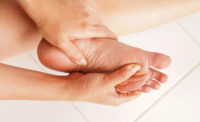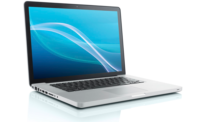If you have ever slipped at work due to worn-out shoes, you know how important good footwear can be. However, even the best shoes wear out, so it is important to replace them before they become a hazard in the workplace. But when, precisely, is that?
Slips, trips, and falls are a leading cause of work-related injuries. A fundamental part of preventing slips and falls is the shoes’ tread, which provides friction with the floor. However, not all treads are the same. While some contain tread patterns that generate strong traction with the floor surface, other designs are insufficient to grip the floor during walking, especially in the presence of water and other liquids, presenting a potential workplace hazard.
To address this problem, National Institute for Occupational Safety and Health (NIOSH)-funded investigators at the University of Pittsburgh developed a computer model that measures and predicts the traction or friction of shoe treads, according to new research published in the Journal of Biomechanics. Looking at both easily visible and microscopic characteristics of the treads on various shoes, they calculated the contact regions and the friction forces generated in these contact regions to estimate the impact of shoe design on friction. Then they compared the computer model’s virtual results with real-life tests of eight different shoes and two different floorings. The comparisons showed that the computer model accurately predicted 73% of the friction between the different shoes’ treads. Estimating the contact regions and friction forces is also critical to developing models that estimate the shoe’s durability, another critical factor in assessing footwear.
Additional research of a wider range of shoe and flooring materials and extending the research to include the impacts of wear will help improve the computer model. While research is still ongoing, the findings from this study highlight the usefulness of this type of computer model in designing slip-resistant shoes to decrease work-related slips and falls. The computer model is now undergoing evaluation as a potential industry standard for designing shoes to prevent work-related slips and falls.
More information is available:
- Predictive Multiscale Computational Model of Shoe-Floor Coefficient of Friction
- NIOSH Workplace Solutions: Preventing Slips, Trips, and Falls in Wholesale and Retail Trade Establishments
- NIOSH Extramural Research and Training Program: Annual Report of Fiscal Year 2016
- NIOSH Extramural Research and Training Programs
Source: NIOSH






